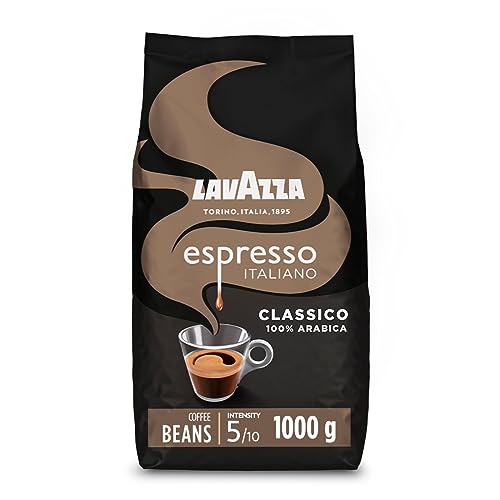This Week's Top Stories About Coffee Beans Types

Coffee Bean Types: Arabica, Robusta, Liberica, and Excelsa
You've probably heard that different varieties can produce different flavors. Read on to learn about four of the most popular varieties: Arabica, Robusta, Liberica, and Excelsa.
Excelsa beans are a kind of Liberica that is only grown in Southeast Asia. They have a tangier, tarter flavor profile and are often used in blends of coffee to add depth.
Arabica
Arabica coffee beans are responsible for 75% of all global production. Arabica beans have a sweeter and less sour taste than Robusta, and come in a variety profiles. The flavor and aroma of coffee are affected by the conditions under which it is grown as well as the methods of processing used.
The word 'coffee' actually derives from the Arabic word for berry, and coffee beans are fruit seeds that grow inside bright red berries. It is believed that ancient Ethiopian shepherds noticed that their goats were invigorated by eating the berries. The cultivation of coffee grew rapidly around the world.
Coffee beans can be grown at higher altitudes and are capable of thriving in cold temperatures and plenty of rain. This is the reason Arabica coffee is thought to be the best tasting type of coffee.
Many specialty coffee shops and roasters are focused on finding their arabica beans in a sustainable manner by focusing on fair wages for farmers as well as sustainable growing practices. These companies blend arabica beans to create unique coffees that can be used in many different brewing techniques. Blending allows control over the taste, aroma and body as well as acidity of coffee. It is generally preferred to get an even and balanced taste that is appealing to a broad audience.
Robusta
Robusta beans are the second-most popular kind of coffee bean around the world. They have a higher amount of caffeine per bean than Arabica and are more resistant to disease and pests. Coffeee contain more chlorogenic acids, which are naturally occurring antioxidants. However, these acids may cause oxidation during the coffee brewing process and may produce undesirable flavors.
The plant is more resilient than the arabica and may grow in less favorable conditions. It is tolerant of warmer temperatures and thrives in direct sunlight. It produces more coffee per plant and grows faster than arabica. This makes it a more economical crop to cultivate.
While it may seem counterintuitive Robusta beans are frequently blended with arabica to make coffee blends. If you find names such as Uganda or Kenya on a coffee bag it's possible that there's also some robusta.
The majority of roasters utilize a mix of arabica and coffee beans to lower costs and preserve the quality. To ensure the integrity of the flavor you must select an excellent bean from a reliable source. This can be done by purchasing the beans directly from a farmer.
Liberica
Liberica beans have a shape similar to a football, which is why they are different from other types of coffee beans. They have a unique aroma that is floral and fruity with the smoky notes. They are often added to other types of coffee beans to provide them with a more rich and more robust taste.

Liberica coffee beans are grown in West Africa and Malaysia (Borneo) as well as in Southeast Asia. They are adaptable to humid, hot climates and can grow at low altitudes. They also have a more resistant to diseases than Arabica and Robusta.
These qualities make them ideal for home-growing. It is possible to purchase the seeds on the internet from a variety of sources, however it's recommended to purchase from local producers to guarantee the quality of the beans. The ideal conditions to grow Liberica coffee are fertile deep volcano soils with a pH that is moderately acidic, and enough annual rainfall.
Excelsa is a different variety of coffee bean. It was once classified as a distinct species, but it has since been reclassified as a Liberica variant. These coffee beans are elongated ovals that are cultivated on 20-30 foot coffee plants at moderate altitudes. Their distinctive taste is sweet and tart, making them a popular choice for blends that are house-made. They have a less pronounced scent and a lower caffeine content than Arabica or Robusta but they still have a distinct flavor.
Excelsa
Although they're the fourth-most popular kind of coffee beans Excelsa beans aren't quite as readily available as Arabica or Robusta. In fact, they were considered a distinct coffee plant species until 2006 when they were changed to an alternative to Coffea liberica var. dewevrei. They are produced in Southeast Asia today and account for 7% of the global production of coffee. These coffee beans are shaped in the shape of a teardrop and are dark and mysterious in taste. They are often blended to add extra body and a luscious tart, ripe fruit flavor.
Arabica beans are the most sought-after, and are renowned for having a an apricot-like flavor. They thrive at high altitudes, and they thrive in warm tropical climates. They are slightly acidic. When roasted and brewed correctly, they can have notes like nuts, chocolate or even fruit.
Robusta is the second most popular coffee worldwide, and is responsible for 40% of the coffee consumed in the world. Robusta beans are smaller and more round however, they contain twice as much caffeine as Arabica. They also taste bitterer than the other two varieties and have a woody, earthy taste.
After you've learned about the four most common types, it's now time to pick your favorite drink. If you prefer an elegant and delicate taste go for an arabica bean or a blend of arabica beans and robusta beans.
